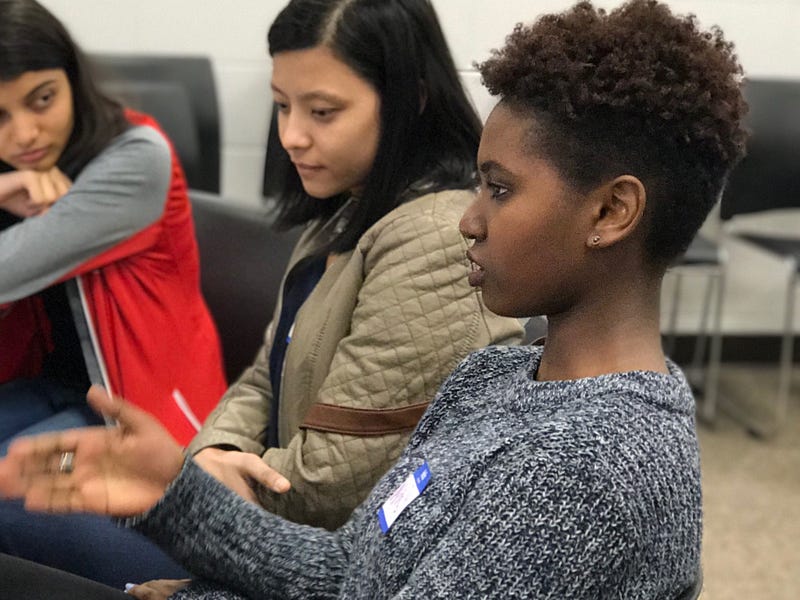The recession was essentially over in 2010. But if you look at most of Kentucky’s schools, you’d never realize that seven years have passed. The remarkable disparities between Kentucky’s richest and poorest school districts are present in every aspect of the education they provide, practically ensuring that impoverished neighborhoods stay uneducated and, therefore, impoverished.
Kentucky’s richest school district, Anchorage Independent, spends $16,160 per student. Its poorest, Bracken County, spends $6,988. Even within school districts, funding inequalities are apparent. This wasn’t always the case. In pre-recessionary times, Kentucky was a leader in educational development, creating new plans for an increase in adolescent literacy and passing the 1990 Kentucky Education Reform Act (KERA), which redistributed over a billion dollars towards low-income school districts. But then the recession hit, and education was no longer a priority.
With the December 2007 shock to the economy, state funding for textbooks dropped from 21.7 million to 0.6 million in a year. Professional development funding went from 15.9 to 6.2 million dollars, and Extended School Services (essentially a free tutoring service) lost over 18 million dollars, all within a year. While this didn’t mean that schools received no funding, the extreme decrease in state and federal funding, (as well as later freezes and sequestrations as the legislature attempted to deal with the state budget), meant that Kentucky’s school districts were forced to rely on their other source of income: property taxes.
It’s no surprise that the public pays for its public education. And it sounds reasonable that your tax money would fund your neighborhood school. But when we fund our schools with revenue generated from property taxes, the value of the homes in a given neighborhood directly correlates with the funding level of the relevant school. Essentially, low-income neighborhoods get low-income schools. While KERA intended for poverty-stricken neighborhoods to receive more state funding, the amount of funding received per at-risk student varies, and in recent years, that amount has plummeted.
But while this system is obviously unequal, many believe that it’s not a pressing issue. “You want to do everything you can do for restoring funding,” Kentucky Senate President Robert Stivers (R-Manchester) stated, “but again, just because you throw money at it doesn’t mean that it’s going to be successful.” The idea that money isn’t a solution reverberates across the nation, from Pennsylvania to Texas. But while money isn’t the only solution, it certainly is a step towards one.
There’s a common misconception that disadvantaged schools should simply make do with what they’ve got. But at what price? Less money equates to lower high school and college graduation rates, poor facilities and materials, an inability to expand, and reduced teacher pay.
In states like Arizona, some schools receive so little funding that they can’t afford to keep the lights on for a full five days, and have turned to four-day weeks to reduce energy bills.
I attend a poor school myself. At Winburn Middle, we spend over a thousand dollars less per student funding that the district average. And while I’ve met wonderful teachers and friends, our lack of funding shows. Last year, we classified as “Needs Improvement” in every area tested. There has been no progress on fixing the giant hole in the art room left by a car crash that occurred over two months ago. Instead of an outdoor track, we have a driveway. It shouldn’t surprise you that nearly seventy percent of students at Winburn qualify for free or reduced lunch.
Don’t get me wrong. I love my school and all the experiences I’ve had there. But I think I would have loved my time there just a little bit more if we’d had the funds to afford new materials for our science labs. And Winburn is nowhere near the bottom of the pile when it comes to school funding.
While not explicitly designed to lessen underprivileged students’ opportunities, current funding policies do just that. It’s certainly not impossible to rise from poverty, but it is quite difficult. You can’t just save money when there are no funds to be saved. And if you don’t have a decent education, “rising up the social ladder” becomes even harder.
Increased funding is the obvious solution to this problem. With more money, schools can afford up-to-date textbooks, modern, innovative materials, better-paid and better-educated teachers. In short, they can reach the goals a high-income school would view as standard, shrinking the socioeconomic achievement gap by what some estimate could be twenty percent, based on test scores. And this has long-term effects, too. A 2015 study found that a ten percent increase in per-pupil spending could lead to a 7.25 percent increase in wages and a 3.67 percent reduction in adult poverty. Another found that low-income students who attended schools in states with educational funding reform could see over a ten percent gain in wages as an adult.
There are a variety of ways to get more money to the schools that need it. Both an increase in overall education funding and a reform in the way state and local governments obtain and distribute funds could help. It is also essential that funding increases come steadily if we want progress to continue.
While the implementation of a new funding reform plan is complicated, the impetus to begin working towards closing the socioeconomic achievement gap is not. In 1989, the Kentucky Supreme Court ruled in Rose v. Council for Better Education that “each child, every child … must be provided with an equal opportunity to have an adequate education.” It’s time for that to happen.

Sadie Bograd is in eighth grade at Winburn Middle School in Lexington and a member of the Prichard Committee Student Voice Team.
The opinions expressed on the Forum represent the individual students to whom they are attributed. They do not reflect the official position or opinion of the Prichard Committee for Academic Excellence or the Student Voice Team. Read about our policies.



.jpg)









